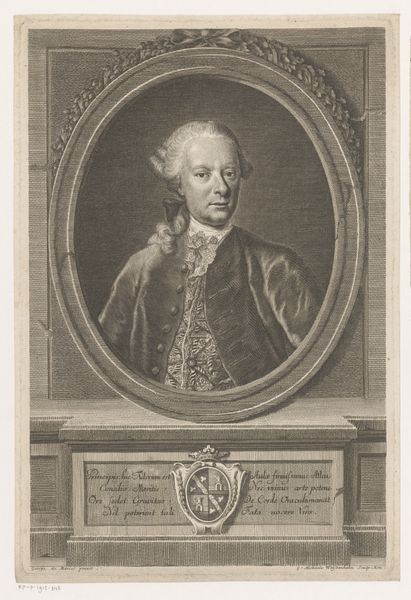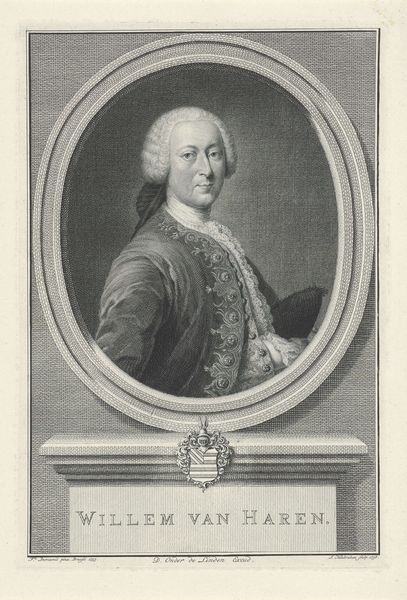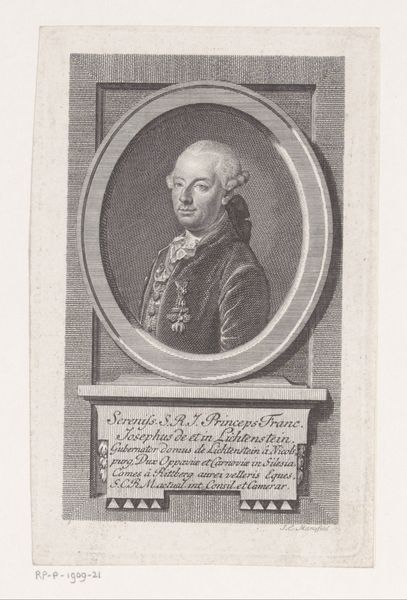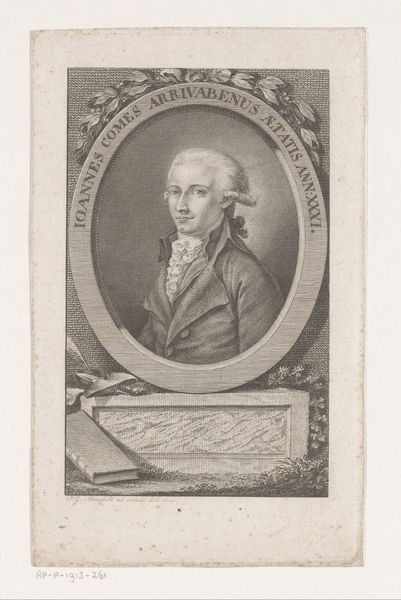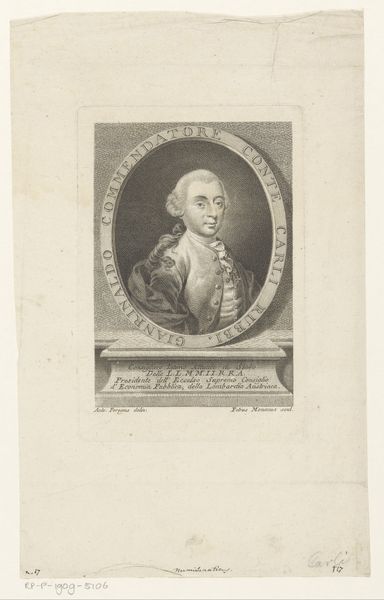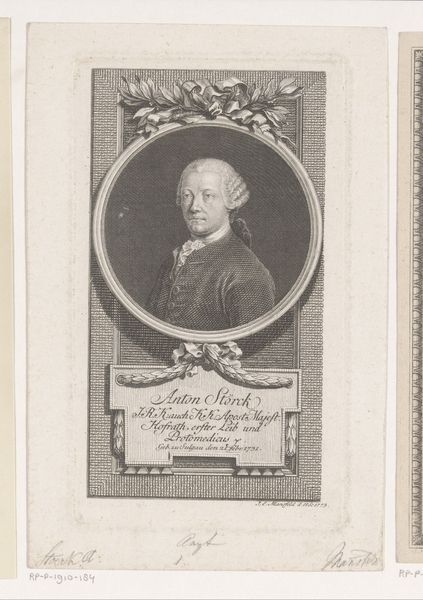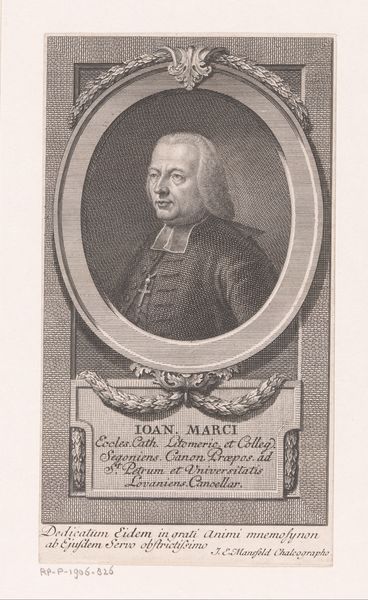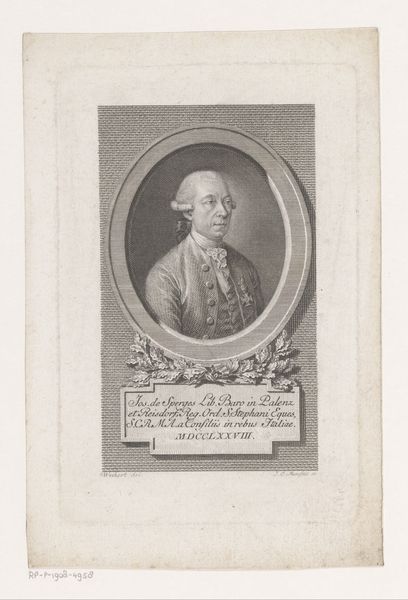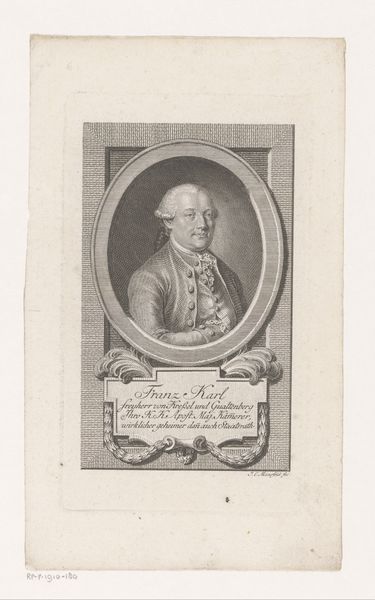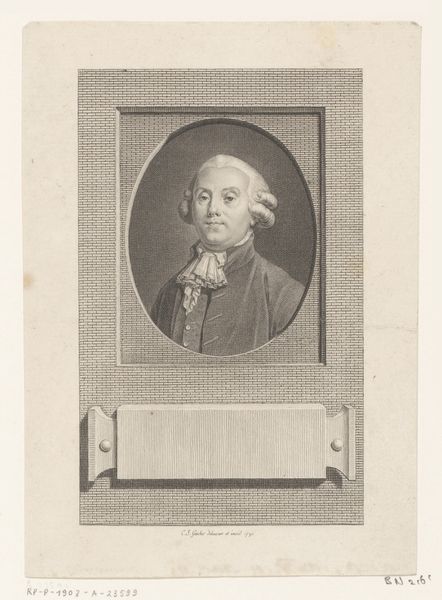
print, engraving
#
portrait
#
baroque
# print
#
engraving
Dimensions: height 210 mm, width 152 mm
Copyright: Rijks Museum: Open Domain
Curator: We’re now viewing a print titled "Portret van Christoph Cellarius." It’s an engraving, placing it somewhere between 1680 and 1733. Editor: It strikes me as rather austere, doesn’t it? The monochromatic palette emphasizes the subject's rather self-satisfied expression and meticulously rendered wig. Curator: The lines are indeed quite precise, indicative of the Baroque period’s preference for order and clarity. The oval frame isolates the subject, emphasizing his individual importance. Consider the relationship between the portrait and the cartouche, where names intertwine amidst stylized embellishment—it underscores an elaborate hierarchy. Editor: Exactly, and beyond the immediate aesthetic, one has to question the purpose of creating these engravings. They circulated within elite networks, reinforcing established power structures through visual representations of status and lineage. This man, whoever he is, is clearly part of the establishment. The coat of arms serves that purpose. Curator: It’s fascinating how Bernigeroth manages light and shadow with such delicacy, considering he's working solely with line. Note how this engraving technique yields this overall, very evenly distributed lighting that creates such a strong presence in this figure. Editor: Still, the piece lacks the raw emotional depth I find compelling in art. The formality almost feels distancing. I'm wondering if the subject had more progressive ideas or contributed to marginalized communities; what was his relationship to privilege? These aren't neutral images; they are instruments within larger social dramas. Curator: Your point highlights the ongoing debate about art’s function within societal structures. I will still argue that even within strict conventions, one can appreciate the technical artistry—the engraver's mastery—in translating likeness and texture into this printed format. Editor: Yes, even in these seemingly contained and composed portraits, there are stories yearning to be uncovered, particularly if you consider what might have been excluded. Curator: A potent reminder that close analysis is indeed critical and requires that the art historian expand their vision beyond that oval frame.
Comments
No comments
Be the first to comment and join the conversation on the ultimate creative platform.

